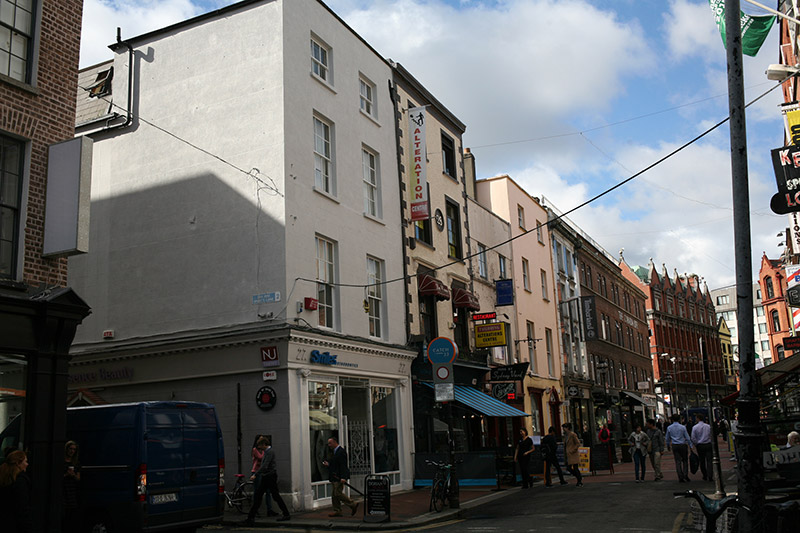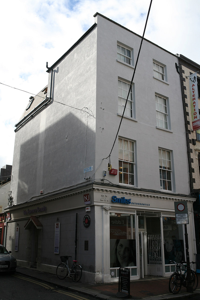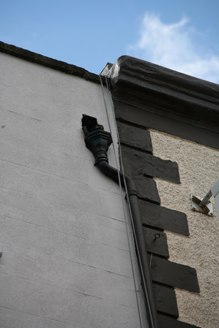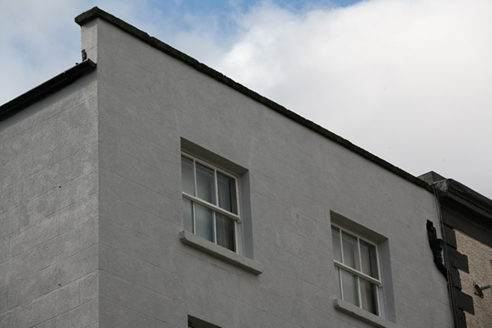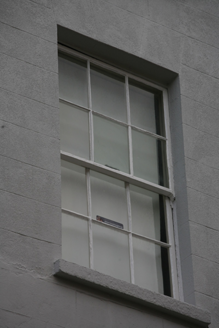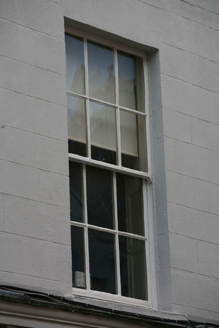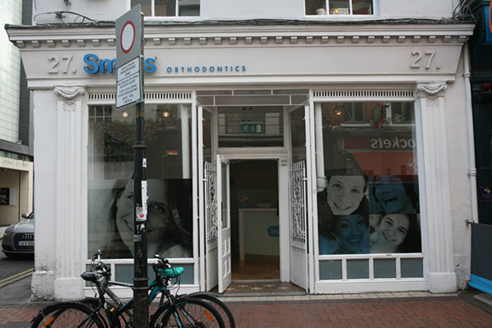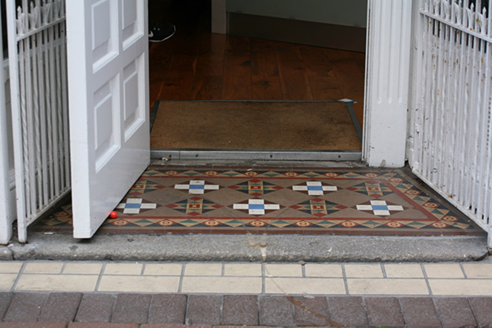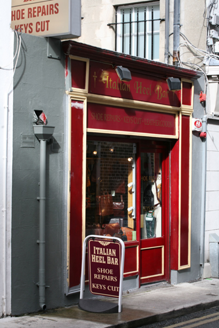Survey Data
Reg No
50920001
Rating
Regional
Categories of Special Interest
Architectural, Artistic
Original Use
House
Historical Use
Shop/retail outlet
In Use As
Surgery/clinic
Date
1720 - 1740
Coordinates
315972, 233695
Date Recorded
22/09/2015
Date Updated
--/--/--
Description
Corner-sited attached two-bay four-storey over concealed basement former townhouse, built c. 1730, with three-storey gabled return to south and early-twentieth century shopfront. Built as pair with No. 28 (50920002). Now in use as clinic. Double-pile artificial slate roof, hipped to front pile (north), replacement Mansard-style roof to the rear (south) with steep slated pitch to east. Large stepped brick chimneystack with clay pots to centre plan, shared with neighbouring building to west. Further brick chimneystack abutting rear elevation and rising between gabled returns of both buildings. Roof hidden behind rendered north parapet wall with granite coping, parapet gutters and cast-iron hopper and downpipe breaking through to west end. Ruled-and-lined cement rendered walls throughout with partially exposed yellow brick walls to return, laid to English garden wall bond. Square-headed window openings with granite sills and timber sash windows c. 1840 with cylinder glass and ogee horns; six-over-six to the first and second floors, three-over-three to the top floor with three-over-six to the upper floors of the rear (south) elevation. Metal bars affixed to lower floors of rear. Symmetrical timber shopfront spanning ground floor comprising pair of square-headed display windows on panelled stall risers, central recessed door opening with decorative tiled floor and ornate wrought-iron gates, all framed by Ionic pilasters with swags and supporting angled fascia with modillioned lead-lined cornice returning to east side elevation. Square-headed door opening to east elevation with recent door, cast-iron gates and recent canopy. Street-fronted at junction between Anne Street South and Anne’s Lane.
Appraisal
Dublin Civic Trust's 'A Survey of Gabled-Fronted Houses and Other Early Buildings of Dublin City' (2012) states 'No. 27 is a rare example of a heavily modified formerly gabled house which retains much of its interior, with its original form still being readable to the rear. The house was constructed on a site leased by Joshua Dawson in 1718 for 999 years to William Wilde, on which he was to construct “fashionable houses” within a period of seven years. Lease documentation suggests the houses - No. 27 and No. 28 - were built as a pair c. 1724-25. They are impressive examples of the gabled house type, with generous proportions and shared closet returns to the rear. The houses were subsequently modified c. 1830-40 with the removal of the front gables, building up the attic storey to the front only, and adding new, almost pyramidal roofs on top. The original rear pitch of the cruciform roof was modified to create more generous headroom at the back of the house. No. 27 is a good example of the extensive efforts made to modify gable-fronted buildings into a more fashionable idiom in the nineteenth-century, as well as the pressures placed on improving upper floor accommodation in compensation for sacrificing the ground floor to commercial use.' Casey (2005) notes that the interiors of Nos. 27-9 have good early-eighteenth century closed-string stairs with turned banisters.
